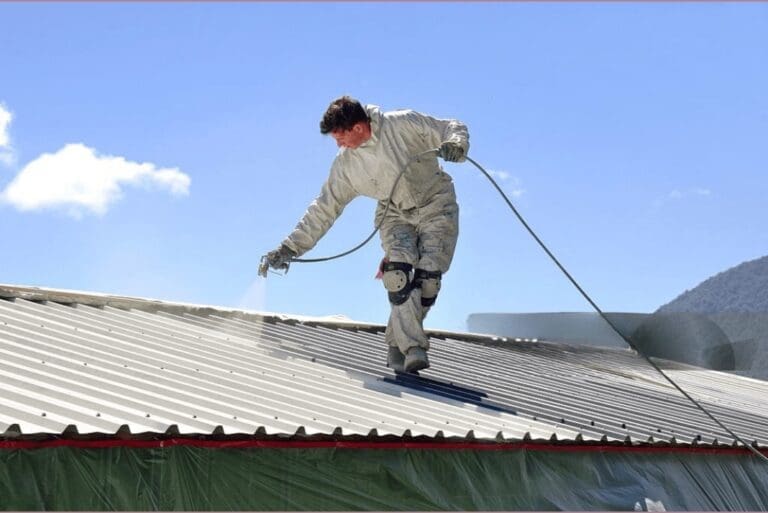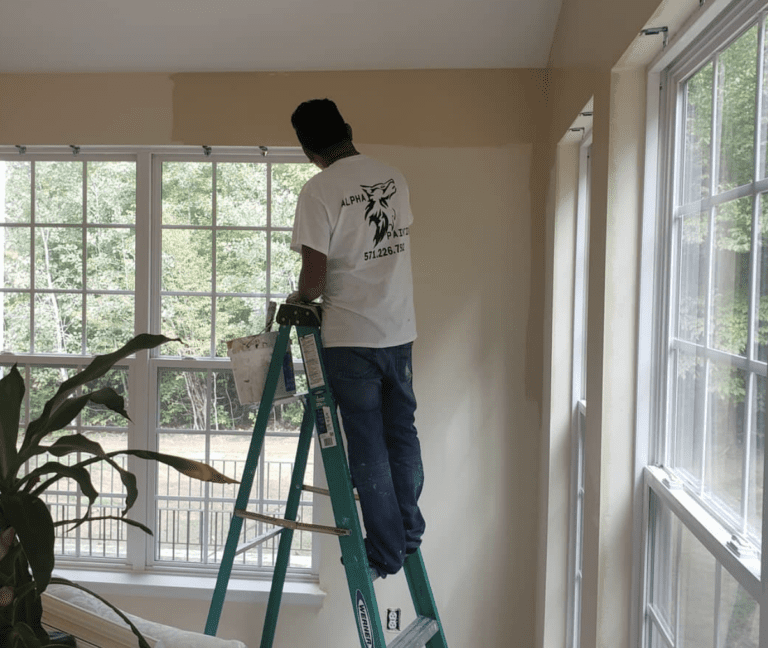Planning Commercial Building Exterior Painting? Avoid These Mistakes
Exterior painting for commercial properties isn’t just about aesthetics. It influences how your business is perceived, helps protect the structure, and contributes to long-term maintenance efficiency. But too often, business owners rush into repainting projects without fully preparing, leading to costly errors that could have been avoided. If you’re planning to repaint a commercial building, steering clear of common mistakes can save money, time, and frustration.
At Alpha Painting, we often step in to correct issues that could have been prevented with better planning. That’s why it’s worth knowing what to watch for before you start.
Table of Contents
Skipping a Detailed Assessment of the Existing Surface
One of the most common missteps is jumping into a paint job without properly evaluating the surface. Old paint may be peeling, there could be cracks in the substrate, or there might be underlying moisture damage. These conditions need more than a fresh coat—they require surface preparation, repairs, and sometimes even replacement of materials.
Commercial buildings are exposed to harsher conditions than residential properties. Wind, UV rays, pollution, and moisture gradually wear down paint and siding. Ignoring these factors leads to paint failure that starts showing up just months after a project is complete. A thorough assessment allows your contractor to identify problem areas and prep them correctly before applying any finish.
Choosing the Wrong Paint for the Environment
Not all paints are created equal, especially for exterior commercial use. Different environments require different formulations. A warehouse located near a highway will face different stressors than a medical office in a quiet suburban area. Paints designed for high-humidity zones, high UV exposure, or industrial pollution need to be matched to the building’s surroundings.
Opting for lower-cost paint to cut expenses often backfires. Quality commercial-grade paint may cost more upfront, but it offers better adhesion, greater durability, and longer-lasting color retention. Cutting corners here typically results in needing a repaint far sooner than expected.
Failing to Consider Weather and Seasonal Timing
Even the best crews can’t overcome poor timing. Temperature, humidity, and precipitation have a direct impact on how paint cures. Painting in extreme heat or in cold weather can prevent paint from adhering properly. The same goes for painting on surfaces that have not dried thoroughly from previous rainfall.
Many property managers try to schedule work during off-peak seasons to avoid interrupting operations, but this only works if the weather supports it. Make sure the schedule aligns with optimal painting conditions. In Virginia, that usually means spring through early fall, with close attention to the forecast.
Underestimating the Importance of Surface Preparation
Painting without proper surface prep is like building on a shaky foundation. No matter how good the paint is, it won’t last if the surface beneath it is compromised. Cleaning, scraping, sanding, caulking, and priming are all part of the preparation process, and skipping even one step can reduce the life of the paint job by years.
Pressure washing removes dirt, mildew, and loose paint. Caulking seals gaps that would otherwise allow water to seep in. Primer helps paint bond to the surface and creates a uniform base. These aren’t optional extras—they’re critical components of any successful commercial exterior project.
Overlooking Compliance and Regulations
Depending on your location and the type of building, there may be local codes or historical preservation guidelines that affect what can and can’t be done. Some commercial properties fall under regulations that specify which colors, finishes, or paint types can be used. Skipping this step could result in having to redo the work at your own expense.
Environmental regulations also come into play. For example, VOC (volatile organic compound) limits are enforced in many areas, and using non-compliant paint can lead to fines or failed inspections. Make sure your contractor is aware of and adheres to all local and federal requirements.
Neglecting to Inform Tenants or Staff
If your commercial building houses tenants or is occupied during the project, communication is key. Surprises aren’t just inconvenient—they can be disruptive to business operations and create tension between owners and tenants.

Notify tenants well in advance of the project start date, provide clear expectations, and work with your painting contractor to minimize disruption. This might include scheduling work after hours or on weekends, blocking off sections of the building in phases, and ensuring proper ventilation when low-odor products aren’t an option.
Rushing the Project Timeline
A rushed job is almost always a compromised one. Paint needs time to dry and cure. Crews need time to properly prep each area. And weather delays can throw off even the best schedules. Trying to compress a commercial exterior painting project into too short a window often means critical steps are skipped or rushed.
Create a realistic timeline with built-in buffers for weather and unexpected repairs. Trust your contractor’s recommendations for how long each phase should take. The goal isn’t to get it done fast—it’s to get it done right.
Assuming All Contractors Are the Same
Choosing the lowest bid might feel like a win, but it often comes with hidden costs. Not all painting contractors have the same level of experience, training, or attention to detail. Some don’t carry proper insurance or offer warranties. Others use unskilled labor or rush jobs to move quickly to the next client.
Check references. Review previous commercial projects. Ask about warranties, materials, and safety procedures. A qualified contractor should be transparent, well-staffed, and able to provide a clear plan for execution, cleanup, and follow-up. Investing in the right team up front can prevent a long list of headaches down the road.
Ignoring Long-Term Maintenance Planning
A quality paint job should last several years, but that doesn’t mean the building won’t need attention in the meantime. Ignoring small issues like minor cracking, mildew growth, or fading color makes the next repaint more difficult and expensive.
Have a maintenance plan in place once the project is finished. Schedule periodic inspections and quick touch-ups to keep the building in good shape. Many commercial property managers fail to budget for this, which undermines the value of their initial investment.
Final Thought
Repainting a commercial building exterior is a major undertaking. Planning ahead, hiring the right contractor, and avoiding common missteps are the best ways to ensure lasting value and curb appeal. Attention to detail in every phase—from surface prep to paint selection to communication—can make the difference between a project that needs touch-ups in a year and one that holds strong for the next decade.






